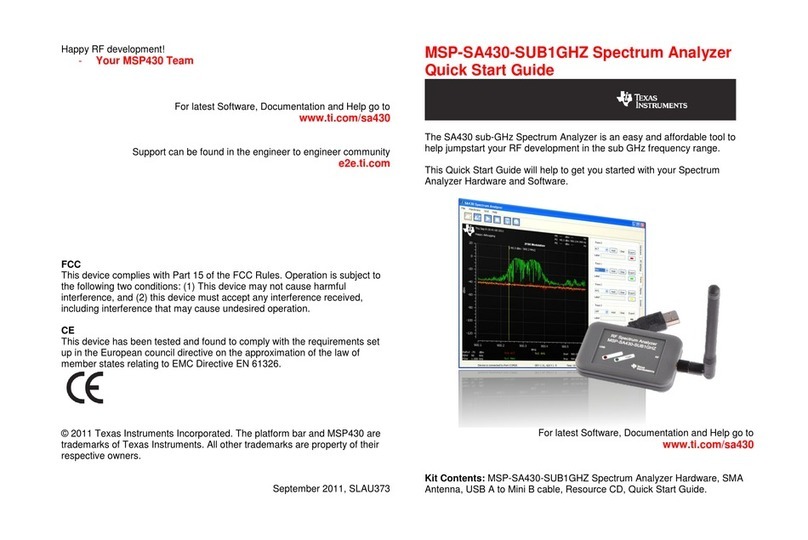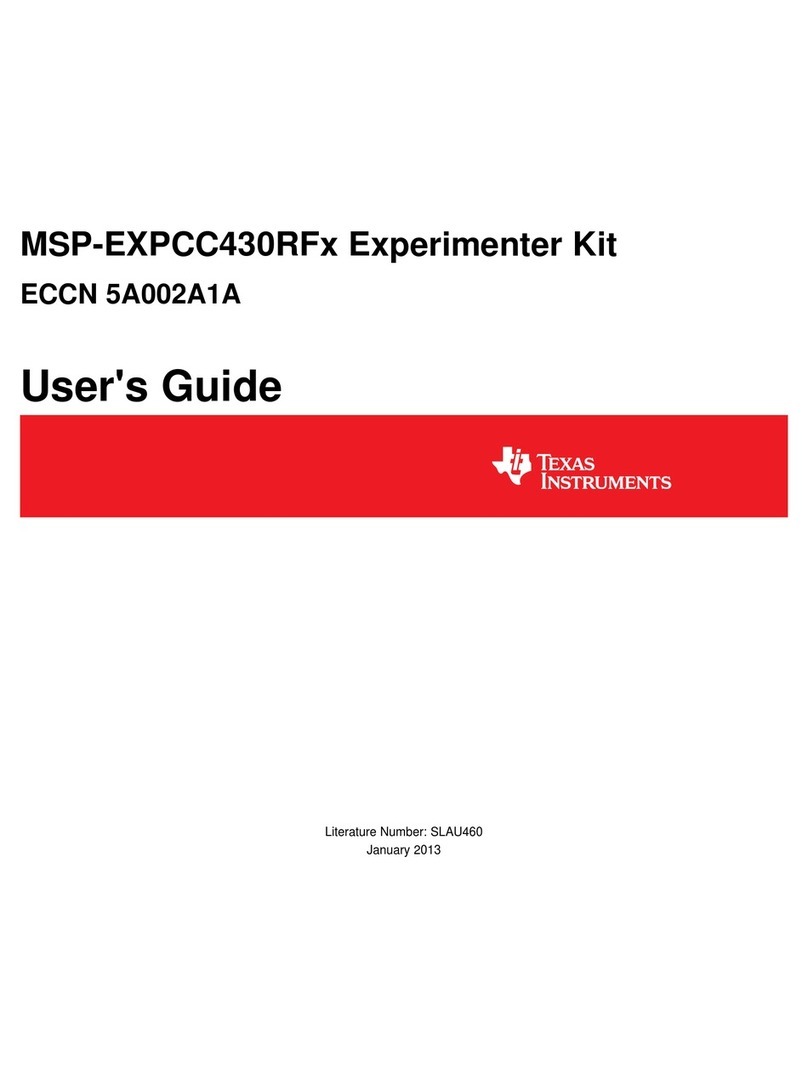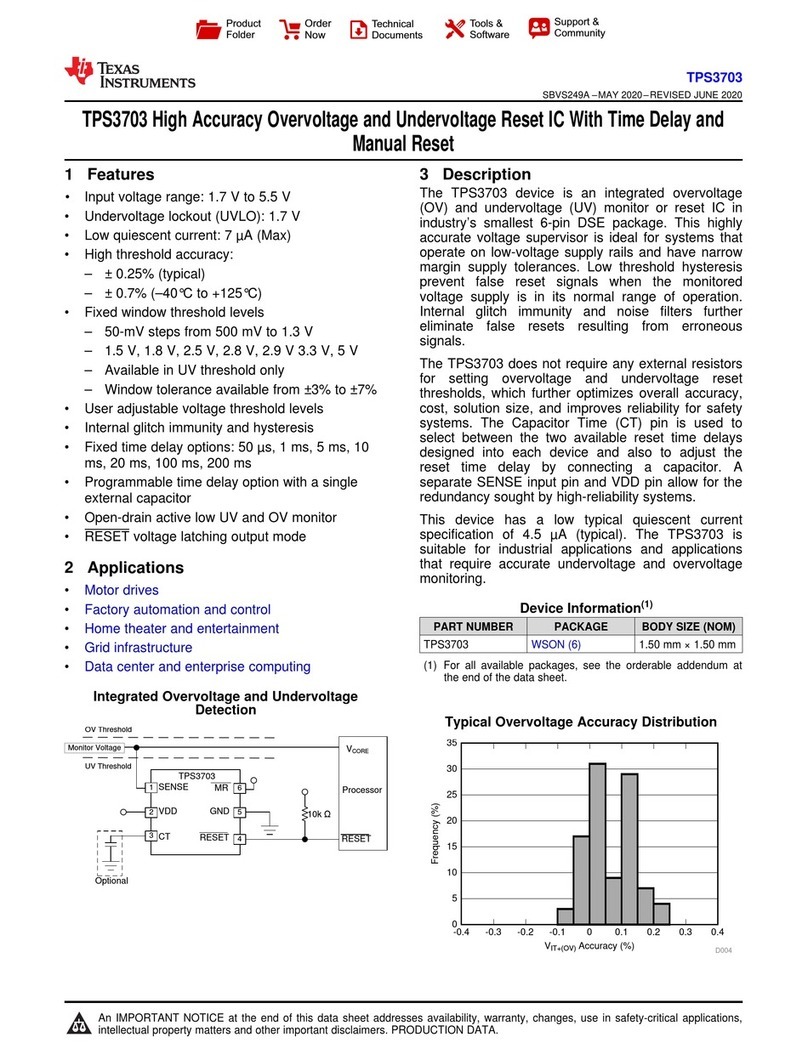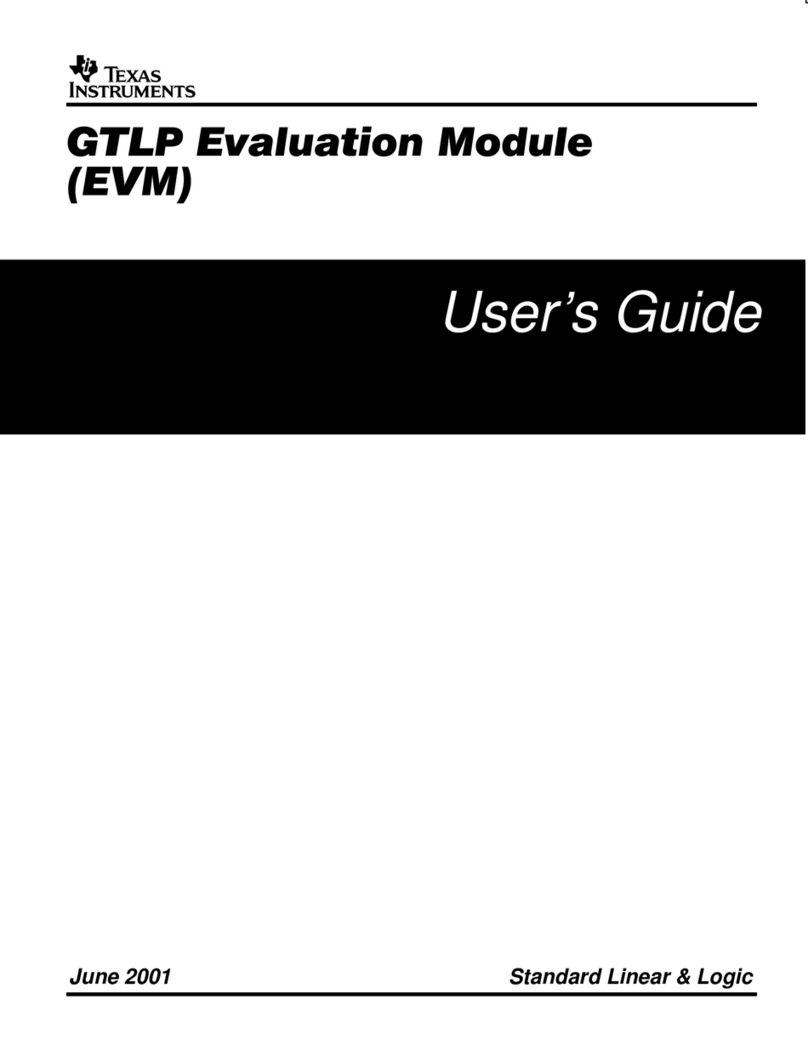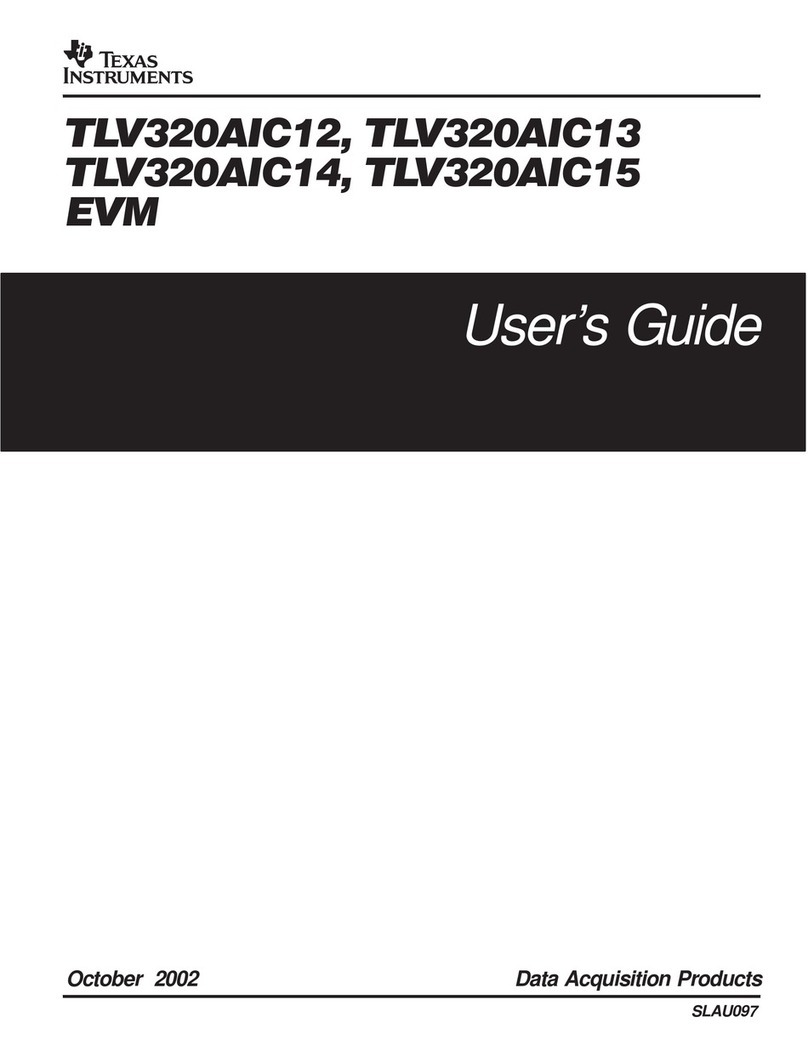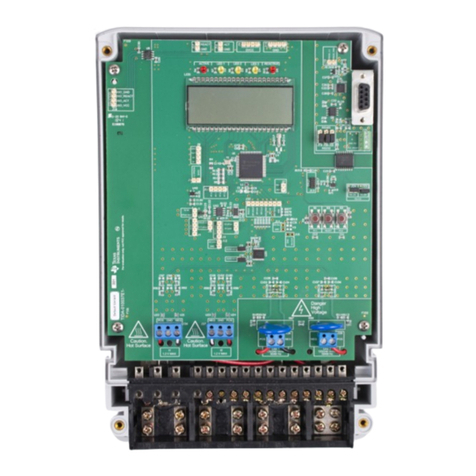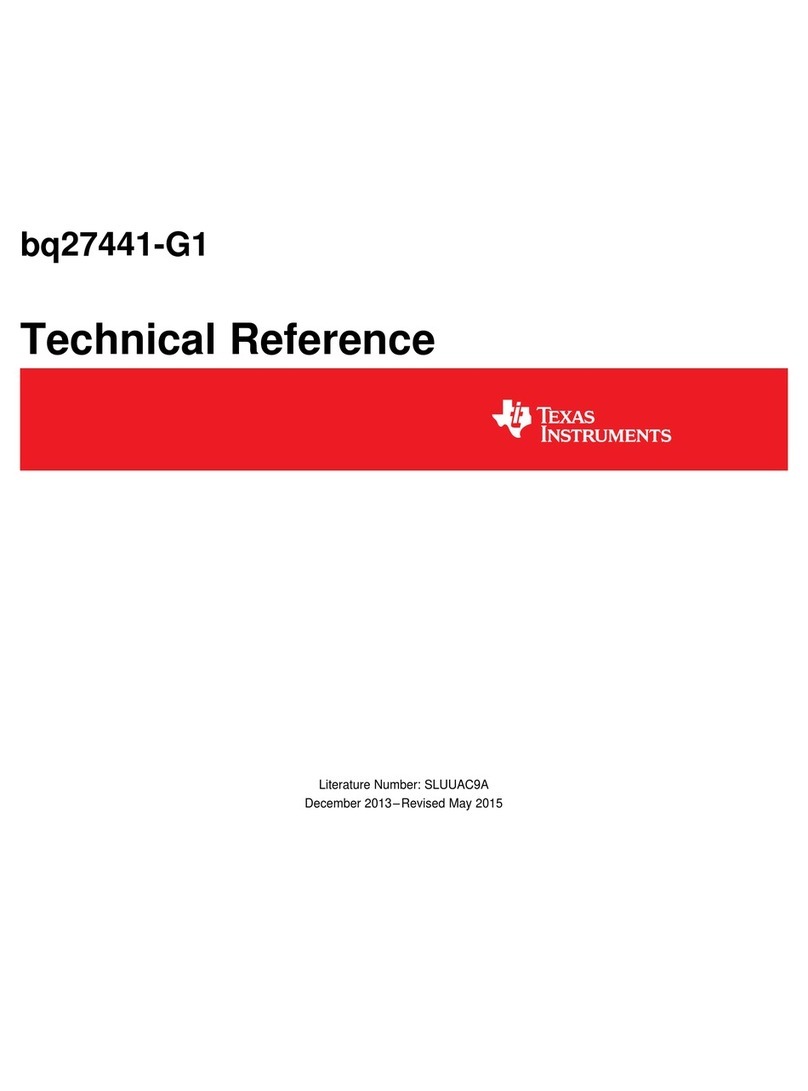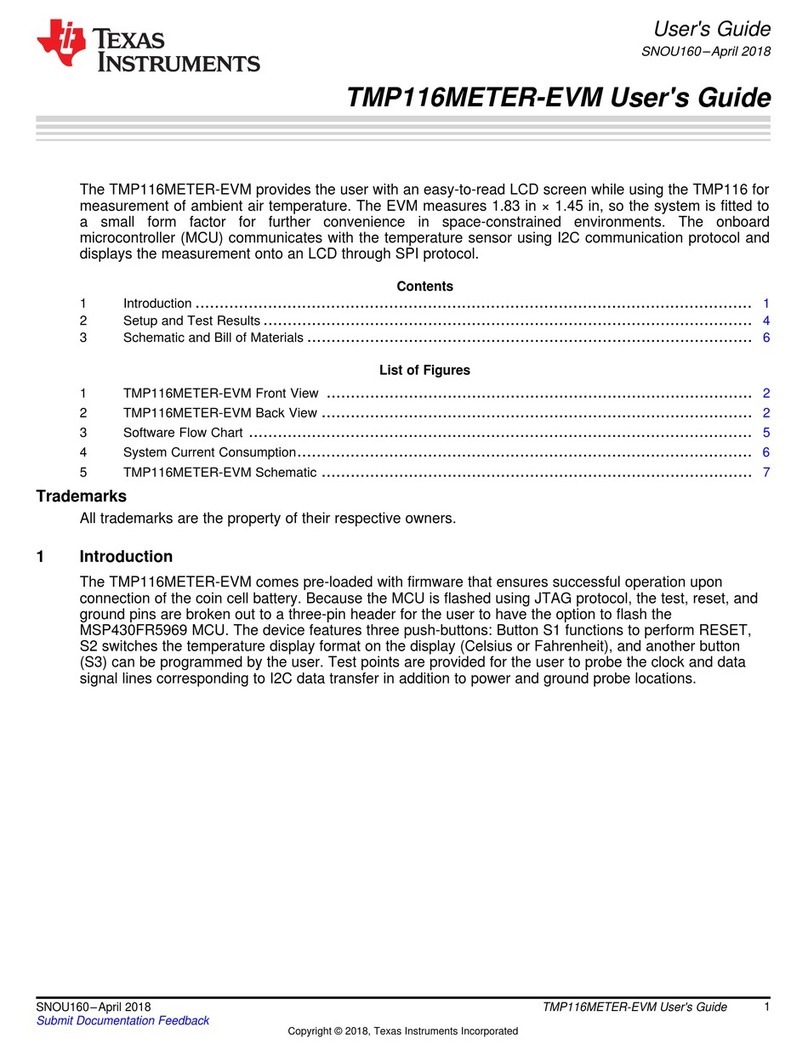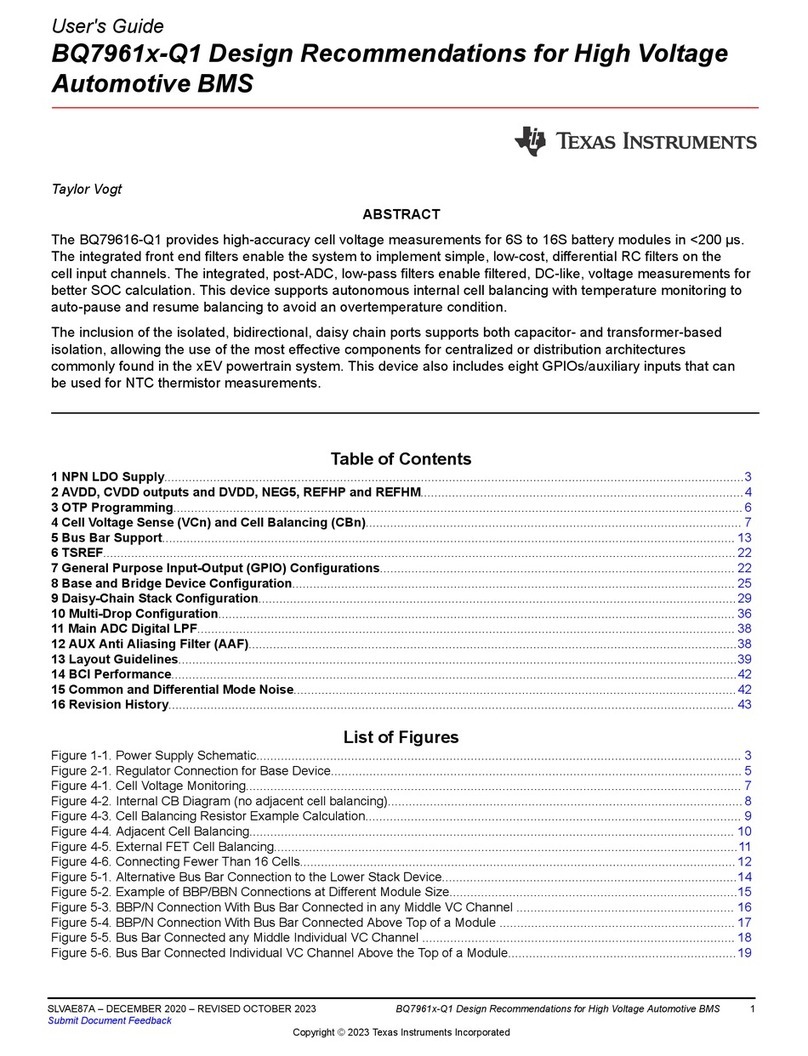
www.ti.com
Contents
1 Overview...................................................................................................................... 3
2 Getting Started............................................................................................................... 4
3 Converting Voltage to Acceleration........................................................................................ 6
4 Determining the Axis of Vibration.......................................................................................... 7
5 Mounting Guidelines......................................................................................................... 9
6 Mounting an Actuator for Testing.......................................................................................... 9
7 Example Waveforms....................................................................................................... 10
8 Screw Hole Dimensions................................................................................................... 11
9 Schematic, Layout, and Bill of Materials ................................................................................ 12
List of Figures
1 Board Connections .......................................................................................................... 3
2 3M Tape on Backside of DRV-ACC16-EVM ............................................................................. 4
3 Attach Accelerometer to Vibrating Object ................................................................................ 4
4 DRV-ACC16-EVM - Measurement Board ................................................................................ 5
5 AC-Coupled Accelerometer ................................................................................................ 6
6 Accelerometer Conversion Voltage ....................................................................................... 6
7 Acceleration Axis............................................................................................................. 7
8 ERM Axes of Vibration...................................................................................................... 7
9 Y and Z Axes Acceleration Measurement................................................................................ 7
10 Z-Direction LRA.............................................................................................................. 8
11 Z-Axis Acceleration Measurement......................................................................................... 8
12 Piezo Module................................................................................................................. 8
13 X Axis Acceleration Measurement......................................................................................... 8
14 LRA Mounting Stack Up .................................................................................................... 9
15 Click and Release Effect .................................................................................................. 10
16 Ramp Up and Pulsing Effect.............................................................................................. 11
17 Screw-Hole Footprint ...................................................................................................... 11
18 DRV-ACC16-EVM Schematic ............................................................................................ 12
19 DRV-ACC16-EVM Top Overlay .......................................................................................... 13
20 DRV-ACC16-EVM.......................................................................................................... 13
21 DRV-ACC16-EVM Top Layer............................................................................................. 13
22 DRV-ACC16-EVM Bottom Layer......................................................................................... 13
23 DRV-ACC16-EVM Bottom Solder........................................................................................ 13
24 DRV-ACC16-EVM Drill Drawing.......................................................................................... 14
25 DRV-ACC16-EVM Board Dimensions................................................................................... 14
26 DRV-ACC16-EVM Fabrication Drawing................................................................................. 15
List of Tables
1 DRV-ACC16-EVM Specifications.......................................................................................... 3
2 Board Power Requirements................................................................................................ 4
3 Power Requirements When Bypassing LDO............................................................................. 4
4 Adhesive Transfer Tape for Mounting Actuators ........................................................................ 9
5 Bill of Materials ............................................................................................................. 16
2DRV-ACC16-EVM Accelerometer User’s Guide SLOU402–June 2015
Submit Documentation Feedback
Copyright © 2015, Texas Instruments Incorporated
